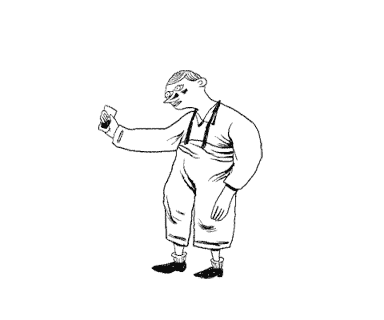你还认为“Intellectual Property”就是“知识产权”的意思? |
您所在的位置:网站首页 › 忐忑,的拼音 › 你还认为“Intellectual Property”就是“知识产权”的意思? |
你还认为“Intellectual Property”就是“知识产权”的意思?
|
知识产权这一概念进入我国已数十年,按常理讲,经过大量的实践和理论研究,应该会有一个为大多数人所接受的定义产生。 为什么现有的定义很难为学者普遍接受呢? 问题出在何处? 英汉翻译出现了语义丢失! 也就是说,将 “Intellectual Property”翻译成“知识产权”是不准确的。 理论界基本认为汉语“知识产权”翻译自英文“Intellectual Property”。 为了论述前述翻译失误,我们有必要研究“Intellectual Property”起源地——欧洲、美国对这一概念的理解。 “Intellectual Property”是什么意思? 英英词典主要解释有 “someone's idea, invention, creation, etc., that can be protected by law from being copied by someone else[9]”或“property that results from original creative thought, as patents,copyright material, and trademarks.[10]” 从这些英文解释看,英语国家普通的英语词典并不认为“intellectual property”和“知识”(knowledge)直接相关。再进一步研究组成这个词语的两个英语单词 “intellectual”和 “property”,短语“intellectual property”的准确含义便浮出了水面。 “intellectual”是形容词,产生于14世纪晚期。 其词源意思为 "grasped by the understanding" (rather than by the senses), fromOld French intellectuel and directly from Latin intellectualis "relating to theunderstanding," from intellectus "discernment, understanding," from pastparticiple stem of intelligere "to understand, discern[11]" 这两个单词与understanding、discernment相关。由此可知,“intellectual”是与“感觉”(senses,即酸、甜、苦、辣、咸、痛等)相对应的一种人类感知世界的一种手段,即理解(understanding)、辨别discernment。另查,《英汉法律词典》将“intellectual”翻译为“知识分子;智力的,理智的,用脑筋的,需智力的”[12]。英语单词一个显著特点是一词多意,在不同语境,相同单词含义不同。如在“I have a dream.”一句中,“have”为拥有之意,然而,同样的单词”have” 在“I have not done it.”中却为助动词,无含义。 从上述词典可知,“intellectual property”中的“intellectual”,实为“用脑筋的”之义;“Intellectual Property”真实表达的是“需要大脑劳动才能明白(understanding)、辨别discernment)的财产”,这种财产与感知(手、嘴、鼻等)有关的财产权相对应。这个概念强调的是用人的头脑去感知,而不是用人的眼睛、手、舌等器官去感觉(当然,“Intellectual Property”是否为一种财产权在西方学术界仍有很大的争议,虽然已经讨论了一、两百年。限于本文主题,本文无意在此论述“Intellectual Property”是否为一种财产权,为表述方便,仅采用“property”财产权这一说法)。 上述观点不仅能从语言本身的角度来解释,还可以从“Intellectual Property”这一概念起源地的西方国家知识产权学者的论述中得到印证。 Stuart Banner指出"intellectual property" 在非法律方面的使用至少可以追溯到1769年,他认为在18世纪,这个短语意思为”something closer to the sum of knowledge possessed by a person or a society” [13]。 由此可知,英语Intellectual Property初始含义虽与“知识(knowledge)”有关,但两者并非一回事。
1845年,第一个将intellectual property这个词语写入专利侵权案判决书的美国法官Levi Woodbury这样写道: “……only in this way can we protect intellectual property, the labors of the mind[14], productions and interests as much a man’s own, and as much the fruit of his honest industry, as the wheat he cultivates, or the flocks he rears.[15]” 1854年,Montague Richard Leverson在其信件COPYRIGHT AND PATENTS: OR, PROPERTY IN THOUGHT[16]用“PROPERTY IN THOUGHT”来描述版权和专利。 1870年 由W. Bridge Adams提议制定Mental Property Act和设立单独的Mental Property Court,并建议在这个法案通过后,允许人们对社会有用的主意、发明(可以是书、音乐作品、绘画、雕刻、建筑等艺术作品)申请、获得财产权[17]。 1878年,Nathaniel Southgate Shaler评论道 “Although the matter of property in the results of intellectual labor, whether it is given in a book, a symphony, or a machine, is essentially the same, it will be that class of intellectual labor, which is included in what are popularly called inventions that will first meet the shock of coming assault. ”[18] 1879年,法国人Gustave Huard's在literary and artistic property条约介绍中直接将“intellectual property”解释为 “a title that includes, as one knows, the rights that the law recognizes for the creator of a work from the brain, whether it happens to be an industrial discovery or a literary or artistic work[19]”。 2000年,EDWARD SAMUELS在其著作THE ILLUSTRATED STORY OF COPYRIGHT认为在1880年代Sir Arthur Sullivan 使用了“Brain Property”这一概念来统称版权、专利和商标[20]。 更具说服力的是,德国学者Alexander Peukert 发表的Intellectual Property一文引述世界知识产权组织(WIPO)对Intellectual Property 的一词的观点并认为 “it (intellectual property[21])also includes other ‘rights’ relating to ‘scientific discoveries ..., protection against unfair competition, and all other rights resulting from intellectual activity in the industrial, scientific, literary or artistic fields[22]”(即知识产权还包括了其它在工业、科学、文学或艺术领域中来自于脑力活动的权利)。Banner, Stuart“Today it connotes legally enforceable rights in products of the mind, such as patents, copyrights, and trademarks.[23]” 西方国家学者的上述论述有力地说明和英语intellectual property 意思相同或近似的英语表述有labors of the mind、PROPERTY IN THOUGHT、Mental Property、property in the results of intellectual labor、work from the brain和rights resulting from intellectual activity。这些短语都表达了 “需要大脑劳动、活动”这一核心要素。 世界普遍认为专利、商标、版权、技术秘密、植物新品种、原产地标志等属于Intellectual Property。 “需要大脑劳动、活动”这一要素可以很好地阐释为什专利、商标、版权、技术秘密、植物新品种、原产地标志等属于Intellectual Property。 首先,我们来看看标识性权利,这也是大多数人认为“知识产权”不准确的主要理据。标识性权利主要有商标、商号、原产地、包装装潢、域名、外观设计。这些标识性权利的核心是文字、图形、色彩或组合,它们所反映的产品或服务,“反映”的过程和购买者“购买”的过程都是通过人的大脑明白、辨别后才实现的。而且,产品或服务的提供者也充分认识到了这一过程并通过“品牌[24]”、“定位[25]”等方法让其客户、潜在客户更容易记住、识别这些标识。如王莲峰教授所言“商誉的形成是人力、物力和财力投入的结果,起关键作用的是人力,即人的创造性智慧。商业标识不仅是其外在形式,更是无数智力劳动的结晶……[26]”由此可以证明,“需要大脑劳动、活动”这一表述与标识性权利无不一致之处。 其次,对技术性权利,如专利、技术秘密、计算机软件、植物新品种、集成电路布图设计,无论是在设计、研发还是在实施过程中,都必须以人的脑力劳动为基础。这些权利理所当然属于“需要大脑劳动、活动”类型的财产范畴。再看看非技术性商业秘密、文学作品、艺术作品、音乐作品等其他类型的知识产权,它们要保护的客体(如交易价格、客户联系方式、小说、山水画、作曲)实际上也是需要人的脑力活动才能理解、创作和欣赏的。 综上所述,从英语语义、知识产权法律专家的阐述以及专利、商标、版权、技术秘密、植物新品种、原产地标志等知识产权各组成种类的法律本质若干角度看,Intellectual Property并非“知识”产权,其真实含义应为“需要大脑劳动、活动才能明白(understanding)、辨别discernment)的财产”。 如果一定要用四个字来概括,“思想财产”或“脑力财产”比“知识产权”似乎更为贴切。 [1] 郑成思著,《论知识产权的概念》,《中国社会科学院研究生院学报》,1996年第1期,第19-29页 [2] 郑成思著,《再论知识产权的概念》,《96知识产权学术研讨会专题》,第13-33页 [3] 吴汉东等著,《知识产权基本问题研究》,2005年3月第1版,第33页 [4]张伟著,《知识产权概念新论》,《科技管理研究》,2006年第2期 [5]张伟著,《知识产权概念新论》,《科技管理研究》,2006年第2期 [6] 王晨燕著,《对知识产权概念的质疑与反思》,福建论坛,人文社会科学版,2005年第9期,第118页 [7]王晨燕著,《对知识产权概念的质疑与反思》,福建论坛, 人文社会科学版,2005年第9期,第121页 [8] 熊文聪著,《论‘知识产权’概念的科学性——关于权利对象的本体研究》,知识产权,2013年第7期,第18页 [9] http://dictionary.cambridge.org/dictionary/british/intellectual-property [10] http://dictionary.reference.com/browse/intellectual%20property?s=t [11] http://dictionary.reference.com/browse/intellectual?s=t [12] 《英汉法律词典》,法律出版社,1998年12月,第400页 [13]Banner, Stuart, The Rise of Intellectual Property, American Property, Harvard University Press,2011年出版,第23页 [14]下横线为本文作者所加强调性标记 [15] DAVOLL 诉 BROWNC案,1845年.案件号码:3662 [16] Montague Richard Leverson, COPYRIGHT AND PATENTS: OR, PROPERTY IN THOUGHT, 出版社:Wildy & Sons 1854年出版 [17] W. Bridges Adams , Patent Laws, JOURNAL OF THE SOCIETY OF ARTS, 1870年1月21日出版 [18]Nathaniel Southgate Shaler,Thoughts on the Nature of Intellectual Property and its Importance to the State,1878年出版, 第2-3页 [19] Justin Hughes,A SHORT HISTORY OF "INTELLECTUAL PROPERTY", 33 Cardozo L. Rev. 1293 2011-2012, 第1307页。下横线为本文作者所加强调性标记。 [20] Justin Hughes,A SHORT HISTORY OF "INTELLECTUAL PROPERTY", 33 Cardozo L. Rev. 1293 2011-2012, 第1335页 [21] 下横线为本文作者所加强调性标记 [22] Alexander Peukert,Intellectual Property,Oxford University Press, 2011年出版。下横线为本文作者所加强调性标记 [23]Banner, Stuart, The Rise of Intellectual Property, American Property, Harvard University Press, 2011年出版,第23页 [24]相关书籍如李业著的《品牌管理》,广东高等教育出版社 [25]相关书籍如艾·里斯,杰克·特劳特《定位》, 机械工业出版社 [26]王莲峰,《商业标识立法体系化研究》,北京大学出版社,2009年4月,第30页 长按上述图片,识别图中二维码快速关注 「约法」 ============================== 您的文章如何出现在【约法】上? 投个稿,我告诉您! 投稿请寄:[email protected] ============================== 返回搜狐,查看更多 |
【本文地址】
